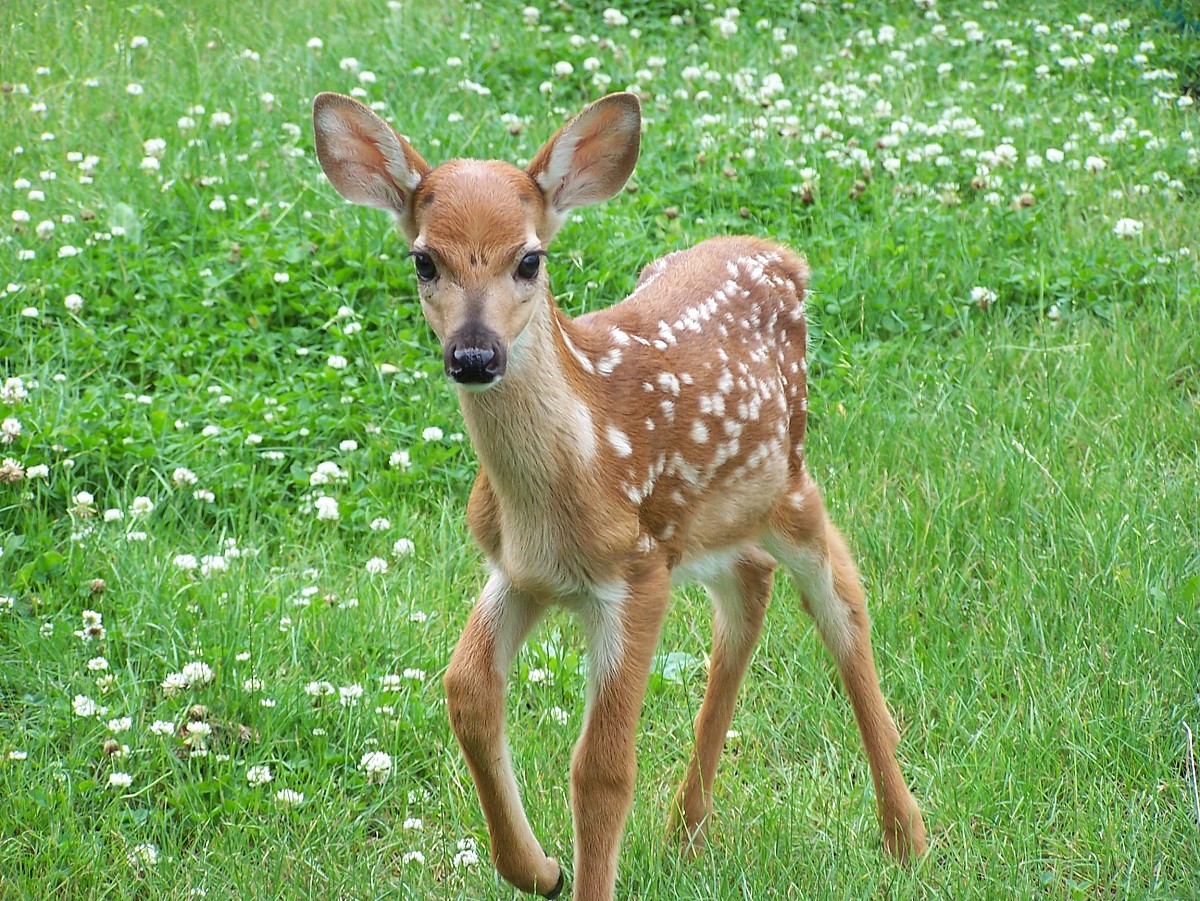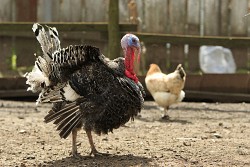Keeping Deer Out of the Garden
 Deer -- especially fawns -- are lovely to look at. However, if you are a home gardener, you're probably none too fond of these creatures, which often devastate a beautiful flower or vegetable garden in a single night. Not only that, they can wreak havoc on established trees and shrubs that took years to get going.
Deer -- especially fawns -- are lovely to look at. However, if you are a home gardener, you're probably none too fond of these creatures, which often devastate a beautiful flower or vegetable garden in a single night. Not only that, they can wreak havoc on established trees and shrubs that took years to get going.
You don't want that to happen to you! You may be struggling to come up with ways to protect your garden from deer, unless you have the budget to hire a contractor to build a good deer fence. Deer fences need to be at least eight feet high to present a real barrier for jumping, although fences made from solid materials like slats can be as low as six feet. (Deer see solid fences as more of a barrier because it's hard for them to tell what is on the other side, which dissuades them from leaping over the fence.)
If you don't have the money for that right now, it doesn't mean that your garden is at the mercy of the neighborhood ungulates, or that you need to sit on the porch with a shotgun waiting for them to prowl around. (In fact, please don't: it's important to respect the dates of hunting season and it's probably not legal for you to fire a shotgun in your neighborhood. Contact your local fish and game department for specific information about hunting.)
Here is a list of actions you can take to keep deer out of your garden.
1. Cage your plants. Yes, we know it looks ugly, and there's something singularly depressing about walking out into the yard and seeing an array of plants in tragic little cages. However, those tacky cages are going to save your plants from being nibbled. Save them for the trees and shrubs you want lasting a good long time, and don't worry: once those plants are established (and grown beyond deer height), you can uncage them.
Lots of hardware and nursery suppliers sell cages for this purpose, but you can make your own just as easily with chicken wire or deer wire, and they will be much less expensive. Purchase a big roll and cut a length to size, using garden stakes to hold it up around the tree. If you really hate the look of cages, consider just installing them overnight, which is when deer do the most damage. There's no guarantee your plants won't get munched during the day, of course, but the risk is much lower.
2. Make your garden less navigable to deer. And I'm not talking about "deer-resistant" plants -- it's too late for that this year. But there are some things you can do now. For one thing, deer aren't too into clutter, because it makes them worry about how they'll escape in a hurry. Strategically move pots, wheelbarrows, garden statues, logs, and anything else you have handy around to turn the garden into an obstacle course. Not so easy to meander around the buffet now, deer!
3. Deter deer with unpleasant odors. Deer don't like hanging out in spots where predators do. And you can actually buy predator urine for scattering around the garden to keep deer away, but that might not be something you're willing to do. However, there are deer repellents that you may apply around the garden (cheap beer can work too). Be aware that you will need to keep using them for them to be effective, and remember to check the packaging to make sure they are nontoxic.
Add some smelly herbs in containers, too. Sage, chives, peppers, and other pungent herbs are really useful for cooking, and they're also great deer repellents. The strong scent is unappealing, and you can scatter the containers around the garden to keep the deer at bay, moving them as necessary in response to changes in deer activity.
4. Harvest, harvest, harvest. Deer love juicy, flavorful fruits and veggies. Harvest these as quickly as they appear, and clear away growth when crops are no longer producing. If you have wild blackberries or other fruit around the garden, clip them back and keep them clipped to further deter deer. Also, keep grass trimmed so deer have nowhere to bed, as this will encourage them to move along.
5. Cut loose with moving garden art. Finally, the moment you've been waiting for! Windsocks, pinwheels, and other garden art that moves around spooks deer, because they're afraid of the movement and they aren't sure what it means. Strategically place items around the garden to keep deer on their tiptoes, and hopefully tiptoeing right on out of your garden. Motion lights can also be effective for scaring deer at night, but check the aim of the beam carefully so it won't disturb you and your neighbors.
Inevitably, you're going to lose some growth to deer this year, but you don't have to lose it all.
Katie Marks writes for Networx.com.
Updated November 18, 2018.
Looking for a Pro? Call us (866) 441-6648

Landscaping Average Costs
Landscapers Experiences

Tree Removal And Backyard Cleanup Make A New House Feel Like Home

The Best Contractor: Prompt, Accurate And Ready For The Unexpected



